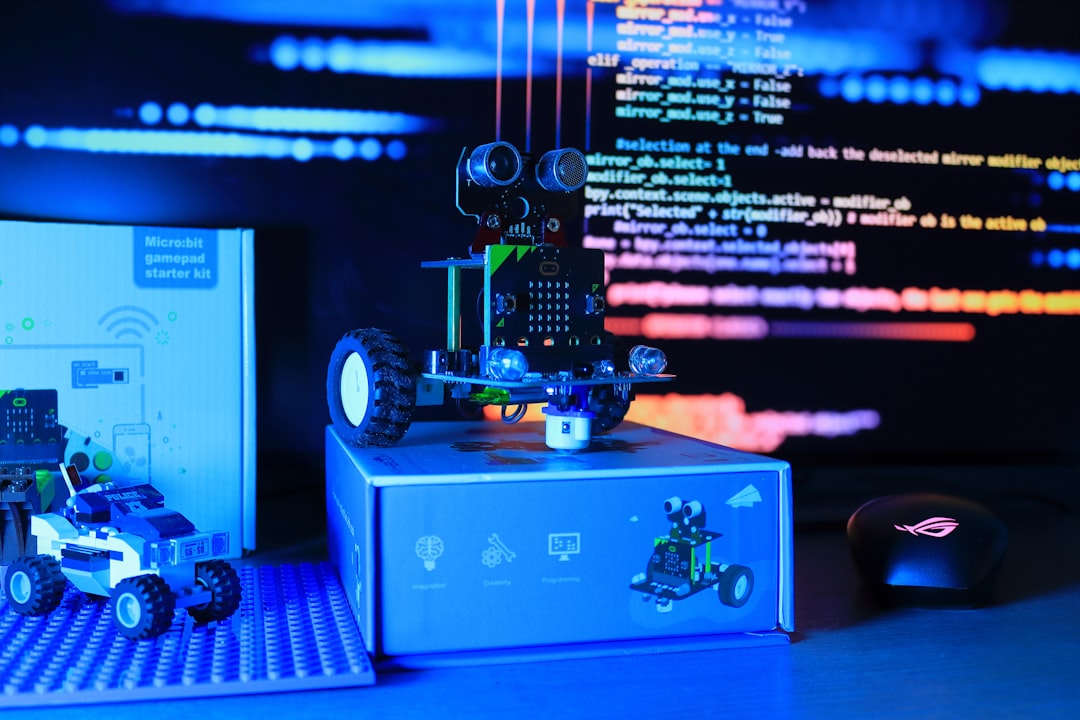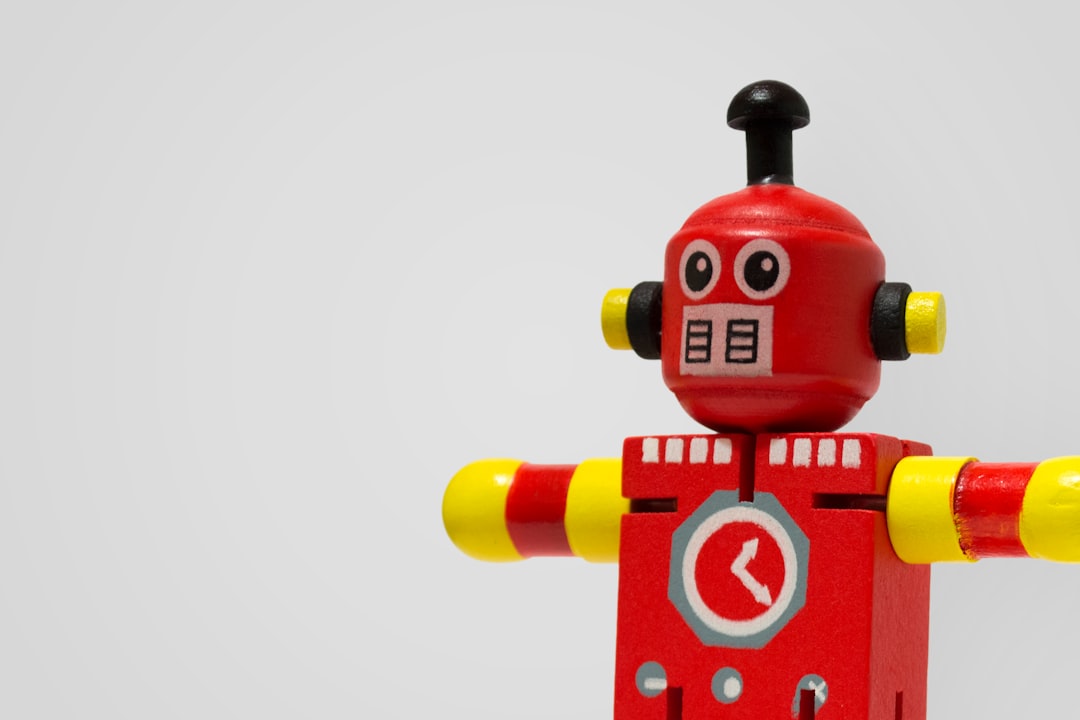

Engage prospects with a scan and streamline customer engagement with FREE QR code marketing tools by Sona – no strings attached!
Create a Free QR CodeFree consultation

No commitment

Engage prospects with a scan and streamline customer engagement with FREE QR code marketing tools by Sona – no strings attached!
Create a Free QR CodeFree consultation

No commitment
Today’s world of smart home technology is pushing home automation companies to deliver seamless and connected experiences for homeowners. As connected devices multiply and customer expectations rise, new challenges emerge, making it less about just building better IoT applications and more about finding scalable, cost-effective ways to engage buyers, capture high-intent activity, and convert interest into measurable results. Many marketing professionals are frustrated by gaps between high-impact offline touchpoints like live demos or product packaging and the digital buyer journeys necessary for building a strong sales pipeline.
QR codes are now a vital tool in home automation. They instantly connect physical experiences to digital actions, whether it is registering a smart thermostat, accessing product tutorials, or connecting with personalized post-sale support. By making these transitions seamless and surfacing rich engagement data, QR codes help companies track interactions that previously went unmeasured. This technology is driving real impact for innovative smart home businesses aiming to increase loyalty, simplify device onboarding, or target high-value leads with timely follow-up, as explored in this overview of smart home adoption.
This article explores how QR codes unlock new conversion opportunities for home automation companies. From practical deployment tactics to audience segmentation, analytics, and proven campaign examples, you will see how advanced QR platforms automate engagement data, power retargeting, and unify offline and online marketing, giving you new visibility into the customer journey while reducing costly blind spots. See how it all comes together in Sona QR’s product overview.

Moving prospects from hands-on product interaction to digital engagement remains a significant challenge for many home automation businesses. Too often, companies miss high-value leads because they are not tracked after an offline touchpoint, resulting in lost opportunities and incomplete visibility into buying intent. QR codes bridge this divide, creating a measurable connection between momentary interest, such as a scan of a device’s packaging or an installation card, and longer-term customer relationships. For more deployment ideas, explore QR codes in marketing.
Replacing analog processes with QR-enabled flows is a simple way to improve conversion. Static brochures can point to dynamic comparison tools, paper warranty cards can be replaced with mobile-optimized registration forms, and manual sign-up sheets at showrooms can become instant booking pages. These improvements reduce friction for buyers and generate first-party data that fuels better follow-up.
Here’s how to do it effectively:
By thoughtfully replacing manual handoffs and generic emails with targeted QR codes, marketers boost conversions and uncover valuable engagement signals that would otherwise remain invisible. Tools like Sona QR streamline this workflow by centralizing code management, analytics, and CRM connections so you can move from scan to action without delay. Start creating QR codes for free.

Persistent challenges like the inability to link print packaging or live demonstrations with digital interactions often leave marketers with incomplete data and lost opportunities. Home automation sales frequently involve multiple offline touchpoints handled by different teams, including retail associates, installers, and support staff, yet most companies lack tools to attribute these moments to pipeline outcomes or customer health. QR codes provide a reliable mechanism to capture intent and extend the conversation.
When implemented correctly, QR codes eliminate unnecessary friction and serve as a bridge between physical experiences and digital next steps. They also enable dynamic messaging that stays current as products evolve, while providing measurement beyond what standalone flyers, manuals, or in-store conversations can offer. The result is faster onboarding, more accurate attribution, and a clearer view of buyer readiness.
QR codes help home automation teams turn brief touchpoints into ongoing conversations, reducing churn risk, surfacing upsell signals, and strengthening the sales funnel. With the right platform, you also gain the transparency needed to invest in the physical channels that truly work.

Success in home automation depends on matching QR code formats to the desired action. While static codes can be useful for evergreen content, most high-value use cases benefit from dynamic codes that can be edited, tracked, and optimized without reprinting assets. Choosing the right format unlocks a smoother user experience and more complete analytics.
For consumer electronics and connected devices, QR codes often serve as the first digital handshake. Make sure each format is tied to a mobile-friendly destination that reflects the scanner’s intent, whether that is onboarding, support, or sales, a point underscored by this overview of QR codes for IoT.
Dynamic QR solutions like Sona QR make it easy to rotate content, A/B test destinations, and deploy variations by product, channel, or audience segment. This flexibility ensures campaigns stay current and responsive to real-world performance data.

Even the most advanced home automation stack can fall short if it ignores the quiet moments where buyers express interest without filling out a form. Growth comes from embedding clear digital actions into the physical spaces where evaluation and ownership happen. By activating these moments, you move people from curiosity to commitment.
Focus on the places where buyers seek information, make decisions, or need assistance. Optimized placements not only spark engagement but also create a valuable trail of intent signals that guide retargeting and sales prioritization.
When offline engagement is instantly captured and segmented, companies can route valuable prospects to sales and customer success teams before interest fades. Over time, your data will reveal which physical assets consistently drive pipeline so you can double down with confidence.

Home automation buyers encounter many small hurdles that slow adoption and obscure intent. QR-enabled workflows remove those roadblocks and create measurable outcomes across the lifecycle. The key is to connect each scan to an experience that aligns with why the customer is scanning in that moment.
Here are three high-impact use cases that fit common customer interactions, from first setup to ongoing support and sales:
By automating the link from QR scans to targeted workflows, companies avoid missed connections and use new data to improve onboarding and lifetime value. Browse Sona QR’s use case library to model these journeys.
Each scan is a signal of intent and context, from a first-time install to a late-night troubleshooting request. When you deploy distinct QR codes across touchpoints, you can automatically segment audiences and trigger personalized follow-up that aligns with where the customer is in the journey. This approach turns everyday interactions into a steady flow of qualified pipeline. See Sona’s blog post titled The Essential Guide to Intent Data: Leveraging Signals to Increase Revenue.
Segmentation becomes especially powerful in home automation because multiple stakeholders influence the purchase: homeowners, renters, installers, and partners. Building audience logic around who scanned and why improves both relevance and response.
With Sona QR, each code functions as a smart entry point that passes audience tags into your data systems. Over time, these segments become the backbone of retargeting that feels helpful, not intrusive.
QR codes are more than a convenience. They are connective tissue that links offline experiences to digital journeys, improving both data quality and conversion rates across channels. See this QR marketing guide for additional ideas.
A coordinated approach also simplifies collaboration between marketing, sales, and operations. Everyone can see which placements drive action, which messages resonate, and which segments are moving closer to purchase or expansion.
QR codes serve as the offline onramp to your digital engine. With a centralized platform like Sona QR, you can manage all codes, monitor performance, and sync scan data with your CRM and advertising tools for unified reporting.
A well-structured checklist reduces guesswork and accelerates time to value. Treat each deployment as a testable experiment with clear goals, so you can iterate quickly and scale what works across products, markets, and channels.
Use the following steps to plan, build, and improve your campaigns with confidence. If you operate across retail, installer networks, and direct-to-consumer channels, consider running separate tracks that speak to each environment’s unique scanning context.
Start by selecting a concrete problem to solve. Examples include untracked showroom visitors, low warranty registration rates, or long gaps between demo and follow-up. Tie each use case to a measurable business outcome such as increased consultations booked or reduced time-to-activation.
Choose static codes for permanent resources, but prefer dynamic codes for campaigns that require measurement, retargeting, or content updates. Dynamic codes allow you to edit destinations after printing and to collect robust analytics.
Design for visibility and clarity. Avoid placing codes on curved surfaces or low-contrast backgrounds. Include a clear instruction and benefit near the code so people know what they get when they scan.
Roll out your codes in the places most closely tied to customer decisions and support needs. Start with placements you can measure easily, then expand to secondary surfaces as results come in.
Measurement turns scans into revenue. Review dashboards weekly, watch for patterns in time-of-day, product line, and location, then adjust content, CTAs, or placements accordingly.
A data-driven checklist ensures both lead quality and quantity improve over time. With Sona QR, you get the analytics, editing, and CRM sync you need to refine campaigns without reprinting.
Many home automation companies struggle to connect offline engagement to revenue, which leaves significant blind spots. Counting website sessions is not enough when key discovery and decision points happen in showrooms, during installations, or via packaging inserts. A modern analytics approach follows the trail from scan to outcome and closes the loop in your CRM. For measurement strategy, see Sona’s blog post titled The Essential Guide to Offline Attribution: Maximizing ROI Through Offline Channels.
Your goal is not just to tally scans, it is to understand how each scan contributes to the buyer journey. Did the person register a product, request a demo, troubleshoot a device, or explore an upgrade? The more context you capture, the better you can prioritize and personalize follow-up.
Sona QR captures real-world engagement and pipes it into Sona for advanced attribution and journey analytics. Together they connect anonymous scans to known buyers, sync with CRM systems like HubSpot and Salesforce, and reveal which offline assets contribute to pipeline and closed revenue. See Sona’s blog post titled Integrate Sona with HubSpot CRM: Unify Data to Supercharge Your Demand Generation.
QR performance improves when teams design for clarity, train for consistency, and automate the next step. The best deployments feel like a service to the customer, not a chore. That means clear promises, fast-loading mobile destinations, and immediate value after the scan.
As you scale, small operational details have an outsized effect. Unique codes per asset prevent data confusion, UTM parameters keep reporting clean, and automated follow-ups ensure no signal goes to waste.
Creative deployments can compound results. For example, add a QR code to an installation sticker in the utility closet that links to a one-minute maintenance checklist, or place a QR on event kiosks that lets attendees book an in-home assessment on the spot. Ideal for stickers and labels.
Industry leaders are using QR codes to close attribution gaps and streamline onboarding. The most successful programs start small, validate a few high-value placements, and then scale across product lines and channels with clear measurement.
Use the following ideas as inspiration, and adapt them to your brand voice, product portfolio, and sales model. The right combination of placement, CTA, and destination can reduce friction and accelerate revenue.
These examples illustrate how home automation companies can transform offline moments into loyal customers while generating the data needed for ongoing performance improvements. The same approach extends to field installers, pop-up events, and partner channels.
Skilled QR execution separates missed chances from meaningful outcomes. Your audience should always know what they get from scanning, and your teams should always know how to explain the value. Setting this standard improves both engagement and customer experience.
Avoid common missteps like hiding QR codes in cluttered designs, placing them too low or too small, or sending scanners to generic homepages that require multiple clicks to find the promised content. Every extra step reduces conversion.
Done well, QR codes unify fragmented buyer journeys and equip home automation teams to solve longstanding conversion problems. Treat every scan as the start of a guided path that balances customer value with measurable business outcomes.
For home automation companies, QR codes have become a strategic tool for driving conversions and gaining valuable customer insights. By embedding QR journeys across every phase of the buyer experience, from product packaging and installation guides to showrooms and print campaigns, companies surface high-fit opportunities and capture previously invisible buyer actions.
Centralized management and robust analytics allow teams to automate lead capture, enrich CRM data with offline engagement signals, and focus retargeting on accounts showing real purchase intent. Every scan becomes a source for business growth, transforming anonymous offline actions into measurable value and paving the way for a smarter, more customer-focused future.
QR codes have transformed home automation companies from basic service providers into dynamic, data-driven growth engines. Whether it’s attracting new customers, enhancing user experiences with seamless device integrations, or enabling instant access to personalized product information, QR codes replace complexity with simple, mobile-friendly interactions that capture valuable engagement data to fuel higher conversion rates. Imagine effortlessly tracking which smart home features captivate prospects most—and optimizing your marketing in real time to boost sales.
With Sona QR, creating dynamic, trackable QR codes is fast and flexible. Update campaigns instantly without reprinting materials, link scans directly to revenue streams, and gain actionable insights that turn every customer touchpoint into measurable business growth. No more guesswork—just smarter, more effective marketing that accelerates your home automation company’s success.
Start for free with Sona QR today and transform every scan into a loyal customer and every interaction into a conversion.
The article does not specify particular top home automation companies but focuses on how companies use QR codes and IoT technology to improve customer engagement and conversions.
Home automation companies use QR codes to connect physical experiences like product packaging, demos, and installation cards to digital actions such as device registration, tutorials, and personalized support, enabling seamless transitions and measurable engagement.
Home automation systems offer benefits such as faster device onboarding, simplified registration, personalized customer interactions, improved follow-up through data capture, reduced customer friction, and enhanced sales pipeline visibility.
Latest trends include integrating QR codes with IoT devices for dynamic content delivery, real-time engagement tracking, audience segmentation for retargeting, unifying offline and online marketing, and using advanced analytics to optimize conversions.
Choose a company that leverages scalable, cost-effective technologies like QR codes for seamless customer engagement, offers measurable data integration with CRM systems, provides strong support and onboarding tools, and demonstrates clear marketing and sales conversion strategies.
Common QR code use cases include device onboarding and activation, warranty registration, demo scheduling, providing access to setup guides, enabling Wi-Fi connections, sharing contact info, and capturing feedback or referrals.
QR codes improve engagement by reducing friction through instant access to digital resources, enabling dynamic content updates, capturing detailed scan data for personalized follow-up, and linking offline touchpoints to online actions.
Effective placements include product packaging and manuals, demo rooms and retail displays, installer leave-behind cards, direct mail flyers, event signage, and trade show booths where buyers seek information or make decisions.
Companies track effectiveness by capturing scan context like time, location, device, and campaign, attributing scans to outcomes such as registrations or bookings, and integrating data with CRMs for real-time alerts and multi-channel attribution.
Best practices include mapping offline friction points, defining clear goals and metrics, choosing dynamic QR codes for flexibility, pairing codes with strong benefit-led calls to action, testing for scannability, deploying in high-intent locations, and continuously optimizing based on data.
Use Sona QR's trackable codes to improve customer acquisition and engagement today.
Create Your FREE Trackable QR Code in SecondsJoin results-focused teams combining Sona Platform automation with advanced Google Ads strategies to scale lead generation

Connect your existing CRM

Free Account Enrichment

No setup fees
No commitment required

Free consultation

Get a custom Google Ads roadmap for your business






Launch campaigns that generate qualified leads in 30 days or less.
